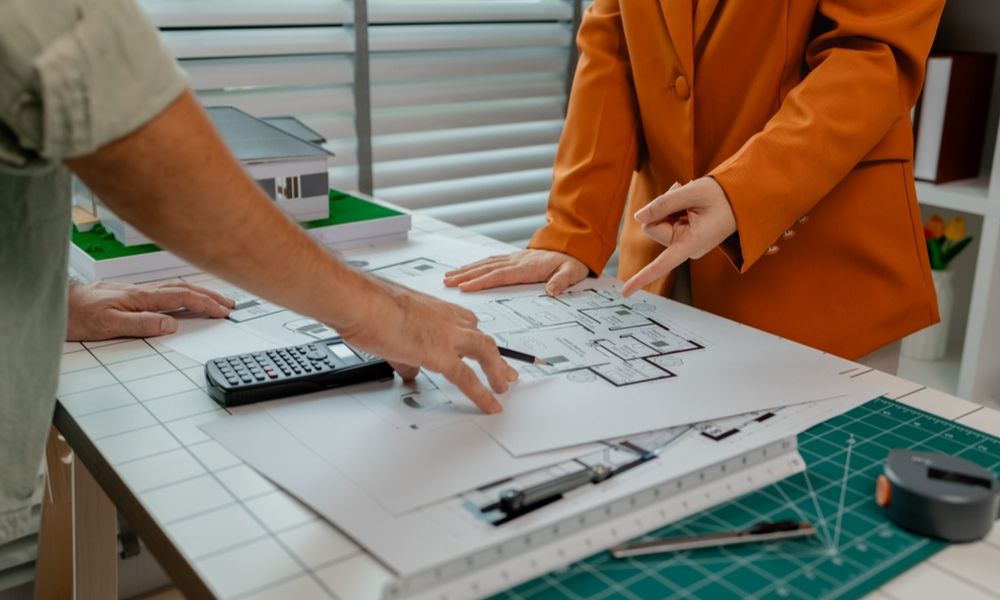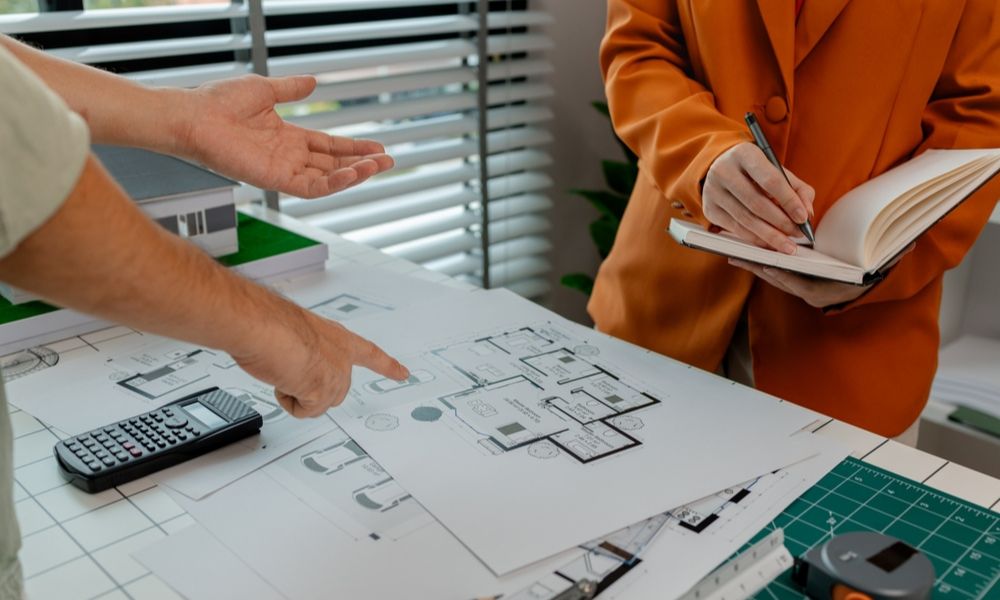Effective communication is essential for success in the construction industry. From project managers to quantity surveyors, every construction professional relies on clear communication to coordinate tasks, manage projects, and collaborate with clients, contractors, and team members. In an industry where deadlines, safety, and budgets are critical, communication skills can directly impact project success, client satisfaction, and team dynamics.
This article explores why strong communication skills are essential in construction, highlights key areas where communication can improve outcomes, and provides actionable tips for construction professionals to enhance their communication abilities.
Understanding the Importance of Communication in Construction
The construction industry involves numerous stakeholders, from architects and engineers to contractors and clients. Each project phase, from planning to execution, depends on precise communication to ensure that all team members are aligned and that tasks are completed on time. Miscommunication can lead to costly delays, safety hazards, and misunderstandings that jeopardize project success.
Key Benefits of Effective Communication in Construction:
- Improved Collaboration: Clear communication fosters better teamwork and coordination, reducing the likelihood of errors.
- Increased Safety: Effective communication ensures that safety protocols are understood and followed, minimizing workplace accidents.
- Enhanced Client Satisfaction: Regular updates and transparent communication keep clients informed, building trust and strengthening client relationships.
- Time and Cost Efficiency: Communicating expectations and addressing issues promptly help avoid delays and additional expenses.
Developing Active Listening Skills
Active listening is a fundamental communication skill that involves fully concentrating on what someone is saying, understanding their message, and responding thoughtfully. In the fast-paced environment of construction, active listening ensures that you capture important details, comprehend client requirements, and respond effectively to feedback.
Tips for Improving Active Listening:
- Maintain Eye Contact: Show that you’re engaged by maintaining eye contact during conversations.
- Avoid Interruptions: Allow the other person to speak without interrupting, giving them time to express their thoughts.
- Summarize and Reflect: After listening, summarize the key points to confirm your understanding and show that you’re attentive.
- Ask Clarifying Questions: If something is unclear, ask questions to clarify rather than assuming. This ensures that you fully understand the message.
Practicing active listening not only enhances your understanding but also builds rapport with colleagues, clients, and contractors, leading to more effective collaboration.
Improving Verbal Communication Skills
In construction, verbal communication is a primary mode of conveying information on-site, in meetings, and during client briefings. Clear and concise verbal communication prevents misunderstandings and keeps everyone on the same page.
Tips for Clear Verbal Communication:
- Be Concise and Direct: Use straightforward language to convey instructions, avoiding unnecessary jargon that might confuse others.
- Tailor Your Message to Your Audience: When speaking with clients, use language they understand. For team members or contractors, be specific about technical details to avoid ambiguity.
- Practice Open Body Language: Nonverbal cues, like posture and gestures, enhance verbal communication and show that you’re approachable and attentive.
- Confirm Understanding: After giving instructions, ask the listener to repeat or summarize them. This confirms that your message was understood correctly.
Improving verbal communication ensures that information is conveyed accurately, reducing the risk of mistakes or delays caused by misinterpretation.
Enhancing Written Communication for Documentation
Written communication is essential in construction, where detailed documentation of contracts, project plans, and reports is necessary. Accurate and clear writing ensures that everyone has access to reliable information and serves as a reference for project requirements, timelines, and budgets.
Tips for Effective Written Communication:
- Use Clear and Structured Language: Avoid overly technical language or long-winded explanations. Use clear headings and bullet points for readability.
- Be Detail-Oriented: Construction documents, such as contracts and cost estimates, require precision. Double-check facts and figures before finalizing any written document.
- Utilize Templates: Templates ensure consistency and professionalism in your documentation, especially for recurring reports, contracts, or project updates.
- Encourage Feedback on Written Documents: Request input from team members or clients to ensure that the information is accurate and understandable for all stakeholders.
Clear and concise written communication ensures that project documentation is easy to understand and reduces the likelihood of disputes or confusion down the line.
Building Nonverbal Communication Awareness
Nonverbal communication, including body language, facial expressions, and gestures, plays a significant role in how messages are perceived. Being aware of nonverbal cues can help you convey confidence and trustworthiness, making you more effective in team settings and client interactions.
Tips to Improve Nonverbal Communication:
- Maintain Positive Body Language: Avoid crossing your arms, as it may appear defensive. Open posture and relaxed body language convey approachability.
- Use Gestures to Emphasize Points: Hand gestures can help emphasize key points but should be used sparingly to avoid distractions.
- Pay Attention to Facial Expressions: Make sure your facial expressions match your message. Smiling can help set a positive tone, while an engaged expression shows interest.
- Be Mindful of Tone and Volume: A calm, steady tone of voice is effective in maintaining professionalism, while speaking too loudly may come across as aggressive.
Being aware of your nonverbal communication helps you project confidence and professionalism, essential qualities for effective leadership and client interactions.

Using Digital Communication Tools Effectively
Digital communication tools are widely used in the construction industry to coordinate tasks, share updates, and track project progress. From email to project management software, leveraging digital tools effectively can streamline communication and enhance collaboration across teams.
Key Digital Tools for Communication:
- Project Management Software: Tools like Procore, Buildertrend, and Autodesk Construction Cloud facilitate project planning, document sharing, and communication across teams.
- Instant Messaging Platforms: Platforms like Slack or Microsoft Teams enable real-time communication and allow team members to ask questions or address issues quickly.
- Video Conferencing Tools: Virtual meetings on Zoom or Microsoft Teams allow teams to connect remotely, discuss project progress, and resolve issues efficiently.
- Document Sharing and Collaboration: Platforms like Google Drive and Dropbox allow for document sharing and editing, ensuring that all team members have access to the latest information.
Using these tools effectively requires clear guidelines, such as setting expectations for response times and determining when to use each tool for optimal results.
Strengthening Conflict Resolution Skills
Conflicts can arise in construction projects due to tight deadlines, budget constraints, or differing expectations. As a construction professional, knowing how to handle conflicts constructively is crucial for maintaining a positive work environment and preventing project delays.
Tips for Resolving Conflicts:
- Stay Calm and Professional: Keeping your emotions in check sets a positive example and prevents the conflict from escalating.
- Listen to All Parties Involved: Understanding each person’s perspective can help identify the root cause of the conflict.
- Focus on Solutions: Instead of assigning blame, shift the focus to finding a solution that works for everyone.
- Follow Up: Once the issue is resolved, follow up with the parties involved to ensure the resolution is effective and that there are no lingering issues.
Effective conflict resolution not only maintains a harmonious work environment but also reinforces trust and respect among team members and stakeholders.
Delivering Constructive Feedback
Providing constructive feedback is essential for improving team performance, building trust, and ensuring project success. When given effectively, feedback helps team members understand their strengths and areas for improvement without feeling criticized.
Tips for Giving Constructive Feedback:
- Focus on Specific Behaviors: Highlight specific actions rather than making general statements, which can come across as vague or unhelpful.
- Use the “Feedback Sandwich”: Start with positive feedback, address areas for improvement, and end with encouragement or praise.
- Be Timely: Provide feedback as soon as possible, ideally after the issue or achievement occurs, so the message is clear and relevant.
- Encourage Dialogue: Invite the recipient to share their perspective. This promotes open communication and helps prevent misunderstandings.
Giving and receiving feedback is an invaluable part of professional growth, contributing to both individual and team development.
Improving Presentation Skills
Whether you’re presenting project updates to stakeholders or pitching a new proposal to clients, effective presentation skills are crucial in the construction industry. Strong presentation skills enable you to convey information clearly, build client confidence, and advocate for project ideas.
Tips for Effective Presentations:
- Practice Your Delivery: Rehearse your presentation multiple times to ensure smooth delivery and minimize nervousness.
- Use Visual Aids: Visual aids like charts, images, and slides enhance understanding and engagement, especially for technical information.
- Engage with the Audience: Maintain eye contact, invite questions, and encourage interaction to keep your audience engaged.
- Structure Your Presentation: Start with an introduction, provide main points, and end with a summary. A clear structure helps the audience follow your message.
Improving your presentation skills allows you to convey information confidently, establish credibility, and connect more effectively with clients and team members.
Emphasizing Transparency and Honesty
Transparency is a key principle of effective communication, especially when dealing with clients and stakeholders. Honest communication builds trust and helps manage expectations, particularly when challenges arise in a project.
Tips for Transparent Communication:
- Provide Regular Updates: Keeping clients informed on project progress builds trust and prevents misunderstandings.
Acknowledge Mistakes: Admitting when errors occur and addressing them promptly demonstrates integrity and accountability.




